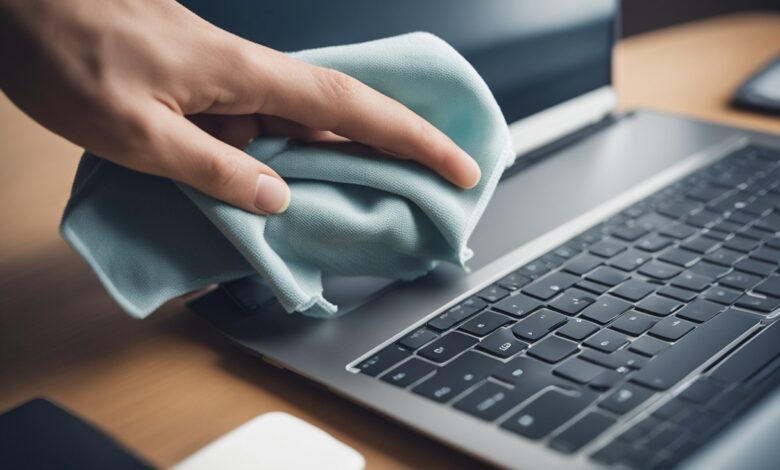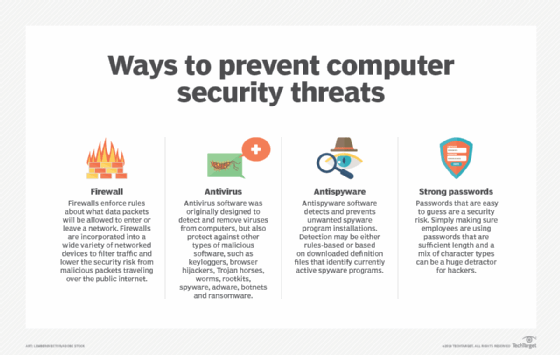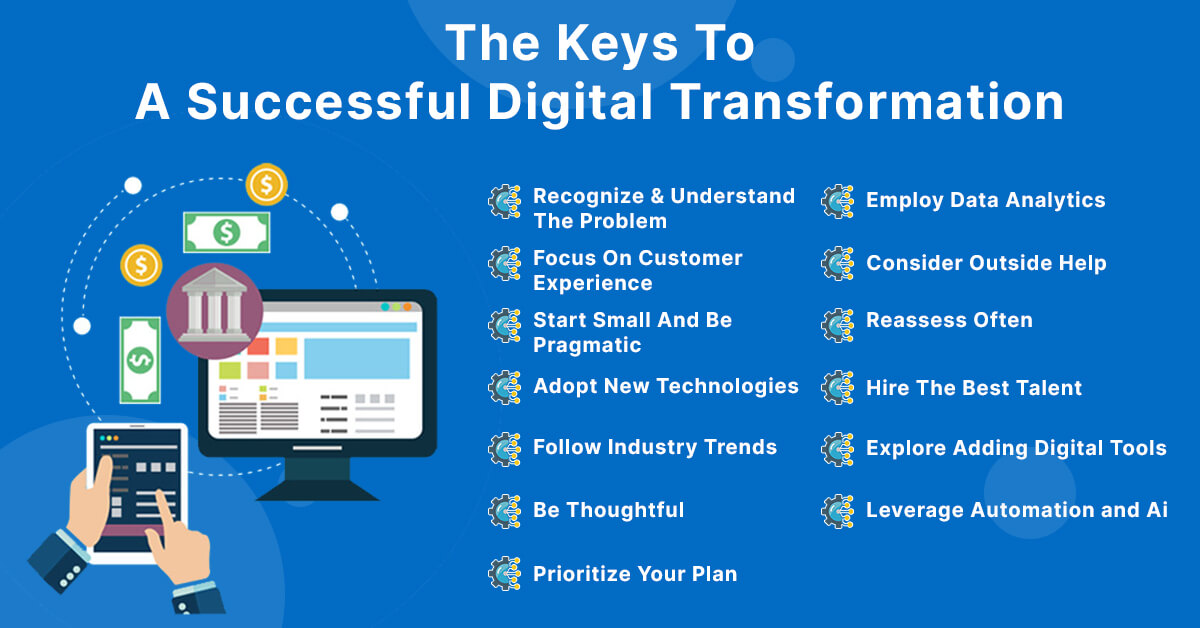How to Safely Clean a Laptop Screen Without Scratching It

Cleaning a laptop screen is an essential task that should be done regularly to ensure the screen remains clear and free of smudges, dust, and dirt. However, cleaning a laptop screen can be a tricky task, especially if you are not using the right cleaning materials or techniques. If you use the wrong cleaning materials or techniques, you could scratch or damage the screen, which could lead to costly repairs.
To clean a laptop screen without scratching it, you need to use the right materials and techniques. First, you should avoid using any harsh chemicals or rough materials that could damage the screen. Instead, use a microfiber cloth or a soft sponge to gently wipe the screen. You can dampen the cloth or sponge with distilled water or a cleaning agent that is approved by the laptop manufacturer to be safe for use on the screen.
It is important to note that you should never spray any cleaning solution directly onto the screen. Instead, apply the cleaning solution to the cloth or sponge and then wipe the screen gently in a circular motion. Additionally, you should avoid pressing too hard on the screen or using any abrasive materials that could scratch the surface. By following these simple tips, you can keep your laptop screen clean and free of scratches.
Contents
- 1 Understanding Screen Types
- 2 Gathering the Right Materials
- 3 Preparation Before Cleaning
- 4 Step-by-Step Cleaning Process
- 5 Tips for Preventing Scratches
- 6 Maintaining Your Laptop Screen
- 7 When to Seek Professional Cleaning
- 8 Frequently Asked Questions
- 8.1 What is the safest method to clean a laptop screen?
- 8.2 Can I use household glass cleaner on my laptop screen?
- 8.3 What is the best way to remove fingerprints from a laptop screen?
- 8.4 Are there any specific cloths recommended for cleaning laptop screens?
- 8.5 How often should I clean my laptop screen to avoid damage?
- 8.6 What steps should be taken to prevent scratching the screen while cleaning?
- 9 Conclusion
Understanding Screen Types
When it comes to cleaning a laptop screen, it is important to know what type of screen you have. There are two types of screens: glass-coated and non-glass-coated.
Glass-coated screens are typically found on high-end laptops and have a glossy finish. They are easier to clean and can withstand more aggressive cleaning methods. However, they are more prone to glare and fingerprints.
Non-glass-coated screens, on the other hand, have a matte finish and are more common. They are more difficult to clean and require a gentler cleaning method to avoid scratching the surface.
To determine what type of screen you have, you can check the manufacturer’s specifications or try the following test: place a piece of white paper on the screen and turn off the laptop. If the reflection of the paper is clear and sharp, you have a glass-coated screen. If the reflection is blurry and distorted, you have a non-glass-coated screen.
It is important to note that using the wrong cleaning method on your laptop screen can cause irreparable damage. For example, using a harsh chemical or abrasive material can scratch the screen and damage the anti-glare coating. Therefore, it is essential to use the appropriate cleaning method for your screen type.
Gathering the Right Materials
Before cleaning a laptop screen, it’s important to gather the right materials to avoid causing any damage. Here are some materials that are recommended:
Microfiber Cloth
A microfiber cloth is a soft, lint-free cloth that is gentle on the laptop screen. It’s important to use a clean microfiber cloth to avoid scratching the screen. Microfiber cloths can be purchased at most electronic stores or online.
Distilled Water
Distilled water is recommended for cleaning a laptop screen because it doesn’t contain any minerals or impurities that could scratch the screen. It’s important to avoid using tap water or other cleaning solutions that could damage the screen.
Spray Bottle
A spray bottle is useful for applying distilled water to the microfiber cloth. It’s important to avoid spraying water directly on the screen, as this could damage the laptop.
Optional: Cleaning Solution
If the laptop screen is particularly dirty, a cleaning solution may be necessary. It’s important to choose a cleaning solution that is safe for laptop screens. CNN recommends using a cleaning agent that is approved by the manufacturer to be safe for use on the laptop screen.
By gathering these materials, users can safely and effectively clean their laptop screens without scratching them.
Preparation Before Cleaning

Before cleaning a laptop screen, it is important to prepare the necessary materials to avoid damaging the screen. Here are some tips on how to prepare before cleaning a laptop screen:
- Turn off the laptop: Before cleaning the laptop screen, it is important to turn off the laptop to avoid any electrical damage or accidental keystrokes.
- Gather cleaning materials: The next step is to gather the necessary materials to clean the laptop screen. A microfiber cloth is the best option for cleaning the screen as it is gentle and does not scratch the surface. It is important to avoid using paper towels or tissues as they can leave lint or scratch the screen.
- Choose a cleaning solution: If distilled water is not available, a cleaning solution that is approved by the laptop manufacturer can be used. It is important to avoid using harsh chemicals or abrasive cleaners that can damage the screen.
- Remove any debris: Before cleaning the screen, it is important to remove any debris or dust particles that can scratch the surface. A soft-bristled brush or compressed air can be used to remove any debris or dust particles.
By following these preparation tips, one can ensure that the laptop screen is cleaned safely and effectively.
Step-by-Step Cleaning Process
Cleaning a laptop screen is a delicate process that requires proper care to avoid scratches or damage. Here are the steps to follow to clean your laptop screen without scratching it.
Turning Off the Laptop
Before cleaning the laptop screen, it is essential to turn off the laptop and unplug it from the power source. This step is crucial because it ensures that no electricity is flowing through the device, which can cause damage to both the laptop and the person cleaning it.
Applying the Cleaning Solution
Once the laptop is turned off and unplugged, it is time to apply the cleaning solution. There are many cleaning solutions available in the market, but it is recommended to use a solution that is specifically designed for cleaning laptop screens. Alternatively, one can use a homemade solution by mixing equal parts of distilled water and white vinegar.
To apply the cleaning solution, dampen a microfiber cloth with the solution and wring it out to remove any excess liquid. It is important not to use too much liquid as it can damage the laptop screen.
Wiping the Screen
After applying the cleaning solution, it is time to wipe the screen. Gently wipe the screen in a circular motion starting from the center and working your way towards the edges. It is important to avoid applying too much pressure as it can cause scratches on the screen.
For stubborn stains or fingerprints, it is recommended to use a sponge or a soft-bristled brush to gently scrub the affected area. However, it is important to avoid using any abrasive materials, such as paper towels or tissues, as they can scratch the screen.
Drying the Screen
After wiping the screen, it is important to dry it thoroughly to avoid water spots. Use a dry microfiber cloth to gently wipe the screen in a circular motion. It is important to avoid using any heat sources, such as a hairdryer, to dry the screen as it can cause damage to the laptop.
By following these steps, one can clean a laptop screen without scratching it and maintain its pristine condition for a long time.
Tips for Preventing Scratches
Preventing scratches on a laptop screen is much easier than trying to remove them. Here are a few tips to help keep your laptop screen scratch-free:
1. Use a Microfiber Cloth
A microfiber cloth is a great tool for cleaning a laptop screen without scratching it. These cloths are soft and gentle, and they won’t leave any lint or debris behind. When cleaning your laptop screen, be sure to use a clean microfiber cloth to avoid rubbing dirt or debris into the screen.
2. Avoid Harsh Chemicals
Harsh chemicals can damage your laptop screen and cause scratches. Avoid using chemicals like ammonia, bleach, or window cleaner, as they can strip the protective coating on your screen. Instead, use a gentle cleaning solution made from water and vinegar or a solution recommended by the laptop manufacturer.
3. Keep Your Laptop Screen Covered
When you’re not using your laptop, keep the screen covered to protect it from scratches. A protective cover or sleeve can help keep your laptop screen safe from scratches and other damage. If you’re traveling with your laptop, be sure to pack it in a padded case to prevent scratches and other damage.
4. Be Gentle
When cleaning your laptop screen, be gentle. Don’t press too hard or use abrasive materials like paper towels or tissues. These materials can scratch your screen and leave behind lint and debris. Instead, use a light touch and a gentle cleaning solution to keep your laptop screen looking its best.
By following these tips, you can help prevent scratches on your laptop screen and keep it looking clean and clear.
Maintaining Your Laptop Screen
Keeping your laptop screen clean is crucial to ensure its longevity and maintain its visual quality. Here are some tips to help you maintain your laptop screen:
1. Turn off your laptop before cleaning
Before cleaning the screen, it is essential to turn off your laptop to avoid any potential damage or electrical shock. This also allows you to see the dust and dirt on the screen more clearly.
2. Use a microfiber cloth
When cleaning your laptop screen, it is essential to use a soft, lint-free microfiber cloth. Avoid using paper towels, tissues, or any abrasive materials that can scratch the screen. You can purchase a microfiber cloth specifically designed for cleaning laptop screens.
3. Dampen the cloth
To clean the screen, dampen the microfiber cloth with water or a cleaning solution specifically designed for laptop screens. Do not use any harsh chemicals or sprays as they can damage the screen.
4. Wipe in one direction
Gently wipe the screen in one direction to avoid any streaks or scratches. Avoid applying too much pressure as it can damage the screen. If there are any stubborn stains, use a circular motion to gently remove them.
5. Clean the keyboard and touchpad
Cleaning the keyboard and touchpad is also essential to maintain your laptop’s overall cleanliness. Use a soft-bristled brush or a can of compressed air to remove any dust or debris from the keyboard and touchpad.
By following these simple tips, you can maintain your laptop screen’s cleanliness and ensure its longevity.
When to Seek Professional Cleaning
In some cases, it may be necessary to seek professional cleaning for your laptop screen. This is especially true if your screen is extremely dirty or has stubborn stains that cannot be removed with gentle cleaning methods.
Professional cleaning services use specialized tools and cleaning agents that are designed to safely and effectively clean laptop screens without causing damage. They can also remove scratches and other imperfections that may have accumulated over time.
If you have a high-end laptop with a delicate screen, it may be best to seek professional cleaning services to ensure that your screen is properly cared for. This is especially important if your laptop is still under warranty, as using the wrong cleaning methods can void your warranty.
It is also important to seek professional cleaning services if your laptop screen has any physical damage, such as cracks or chips. Attempting to clean a damaged screen can cause further damage and may even render your laptop unusable.
Overall, if you are unsure about how to safely clean your laptop screen or if you have any concerns about the condition of your screen, it is best to seek professional cleaning services. They have the expertise and tools needed to ensure that your screen is properly cared for and maintained.
Frequently Asked Questions
What is the safest method to clean a laptop screen?
The safest method to clean a laptop screen is to use a microfiber cloth and distilled water or a cleaning solution that is approved by the manufacturer to be safe for use on the laptop screen. It is important to avoid using harsh chemicals or abrasive materials, as they can damage the screen.
Can I use household glass cleaner on my laptop screen?
No, it is not recommended to use household glass cleaner on a laptop screen. The chemicals in the cleaner can damage the screen and cause discoloration or a hazy appearance. It is best to use a cleaning solution that is specifically designed for cleaning laptop screens.
What is the best way to remove fingerprints from a laptop screen?
The best way to remove fingerprints from a laptop screen is to use a microfiber cloth and a cleaning solution that is safe for use on the screen. Gently wipe the affected area in a circular motion until the fingerprints are removed. Avoid pressing too hard on the screen, as this can cause damage.
Are there any specific cloths recommended for cleaning laptop screens?
Yes, it is recommended to use a microfiber cloth for cleaning laptop screens. Microfiber cloths are gentle on the screen and do not leave lint or scratches. It is important to use a clean cloth to avoid transferring dirt or debris onto the screen.
How often should I clean my laptop screen to avoid damage?
It is recommended to clean your laptop screen once a week to avoid the buildup of dirt and debris. However, if you notice any smudges or fingerprints on the screen, it is best to clean them as soon as possible to avoid damage.
What steps should be taken to prevent scratching the screen while cleaning?
To prevent scratching the screen while cleaning, it is important to use a clean microfiber cloth and avoid using any abrasive materials. It is also important to avoid pressing too hard on the screen, as this can cause damage. Additionally, it is recommended to turn off the laptop and unplug it before cleaning the screen to avoid any electrical damage.
Conclusion
Keeping your laptop screen clean is important for both its appearance and longevity. A dirty screen can affect your viewing experience and even cause eye strain. However, cleaning your laptop screen can be a delicate process, as you don’t want to scratch or damage it.
In this article, we have provided some tips on how to clean your laptop screen without scratching it. First and foremost, it’s important to turn off your laptop and unplug it before cleaning the screen. You can use a microfiber cloth to gently wipe away any dust or dirt. Avoid using any harsh chemicals or rough materials that could scratch the screen.
If you need to remove stubborn dirt or fingerprints, you can use a mixture of water and isopropyl alcohol. Simply dampen a microfiber cloth with the solution and gently wipe the affected area. Be sure to avoid getting any liquid inside your laptop.
Remember to clean your laptop screen regularly to keep it looking its best. By following these tips, you can ensure that your laptop screen stays clean and scratch-free for years to come.



